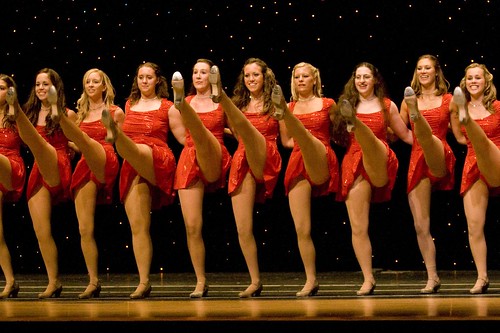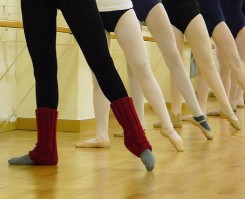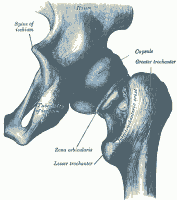
I’m sure that students reading this blog have used or heard the term battement before. If grand battement immediately comes to mind, I’m not surprised, as the word battement is commonly dropped from the name of other familiar terms.
A mother, father, brothers, grandparents, uncles, all share a family name. In a similar way battement is a family of movements.
From the Technical Manual and Dictionary of Classical Ballet: Battement [bat-MAHN] — Beating. A beating action of the extended or bent leg. There are two types of battements, grands battements and petits battements. The petis battements are: Battements tendus, dégagés, frappés and tendus relevés: stretched, disengaged, struck and stretched-and-lifted. In this must-have reference Gail Grant devotes no less than 7 pages to the battement family which also includes members such as fondu developpé, balançoire, retiré or raccourci, soutenu, battu/serré, and more.
Why We Practice Them

Battements, as they are practiced at the barre and in centre, are the foundation of many other movements in ballet (jumps and travelling steps such as assemblé, tour jeté, grand jeté, and so many more) and in other dance forms. It is necessary to have a solid grasp on the simplest forms in order to perform the others correctly. Often battement are separated into two categories: petite and grand. However, one might also divide battements according to whether or not they interact with the floor.
Articulation
Tendus, dégagés, frappés, grand battements (balançoire, en cloche, fouetté, etc), soutenu, and retiré, are all battement that brush or press away from the floor. In each of these movements, it is important to remember the role of the feet. I have encountered many beginning dancers that neglect “working through” the foot as the working/gesture leg is disengaged from it’s standing position. Think of the foot as a paintbrush creating a brush stroke on the floor, using the intrinsic muscles of the arch and finally, the toes. This small action will strengthen the foot for jumping and relevé, and helps to “ground” the movement, providing stability, particularly in centre. Stability can also be increased by imagining the standing leg rooted deep into the earth as the working leg moves outward and/or skyward from the midline. The foot also articulates in battements that lift the knee upward, as in retiré/raccourci. Think of this as a one-legged jump, requiring the same roll-thru of the feet. This is great strengthening practice for jumps to come. Similarly in grand battements, I like to remind my students that power and height of the working leg is achieved through sending force into the floor. Much like a rocket ship which propels itself into space by sending heat and energy downward, a dancer must send energy into the floor through the leg and foot to create “lift-off” in grand battements.
[youtube=http://www.youtube.com/watch?v=7O-Xt5tLogw]
This video by Lisa Howell is a useful and clearly explained demonstration of the articulation necessary in tendu.
Isolation and Sustaining the Leg
Battements that do not interact with the floor are a much smaller branch of the family. Still they are an illustrious group. Petites battement sur-le-cou-de-pied and battu reflect the more literal “beating” action of battements. In barre work these movements introduce agility and speed. They require that the knee be lifted away from the body for a sustained period (a preparation for things to come) while also isolating the rapidly moving lower leg from the upper leg. This isolation is important later for all jumps with beats because it encourages stillness or “quiet” in the pelvis and stability in the core while all that fast action is going on below.
A Word on Turnout
 In all battement, maintaining turn-out is crucial. Many students struggle with this and it can take years to develop the strength to utilize and maintain turn-out with consistency. One way to “find” or create awareness of turnout in battements is to place the fingertips on the greater trochanter. This is the portion of bone at the outside of the hip joint that you’ll probably feel pressing into the floor when lying on your side. With the fingertips on this protrusion, execute a battement tendu. When properly utilizing your turn-out you will feel the trochanter slip backward but not dip lower or lift higher as you disengage the leg. This exercise may be used as an alternative or supplement to the more commonly taught concept of allowing the heal to lead in tendu.
In all battement, maintaining turn-out is crucial. Many students struggle with this and it can take years to develop the strength to utilize and maintain turn-out with consistency. One way to “find” or create awareness of turnout in battements is to place the fingertips on the greater trochanter. This is the portion of bone at the outside of the hip joint that you’ll probably feel pressing into the floor when lying on your side. With the fingertips on this protrusion, execute a battement tendu. When properly utilizing your turn-out you will feel the trochanter slip backward but not dip lower or lift higher as you disengage the leg. This exercise may be used as an alternative or supplement to the more commonly taught concept of allowing the heal to lead in tendu.
Each movement within the battement family deserves its own post. Writer Dianne Buxton has added a breakdown of the basics at her Ballet and Pointe Shoes blog:
Don’t forget to pick up a good ballet dictionary. It will prove helpful in your study of ballet (and other dance forms) to understand and utilize proper ballet terminology. Once again, I highly recommend the Technical Manual and Dictionary of Classical Ballet.
What are some images that have helped you (or your students) in executing movements in the battement family?
Are there other ways you might categorize or breakdown the various types of battements?
Are there additional resources you’d recommend?
Nichelle Suzanne is a writer specializing in dance and online content. She is also a dance instructor with over 20 years experience teaching in dance studios, community programs, and colleges. She began Dance Advantage in 2008, equipped with a passion for movement education and an intuitive sense that a blog could bring dancers together. As a Houston-based dance writer, Nichelle covers dance performance for Dance Source Houston, Arts+Culture Texas, and other publications. She is a leader in social media within the dance community and has presented on blogging for dance organizations, including Dance/USA. Nichelle provides web consulting and writing services for dancers, dance schools and studios, and those beyond the dance world. Read Nichelle’s posts.

